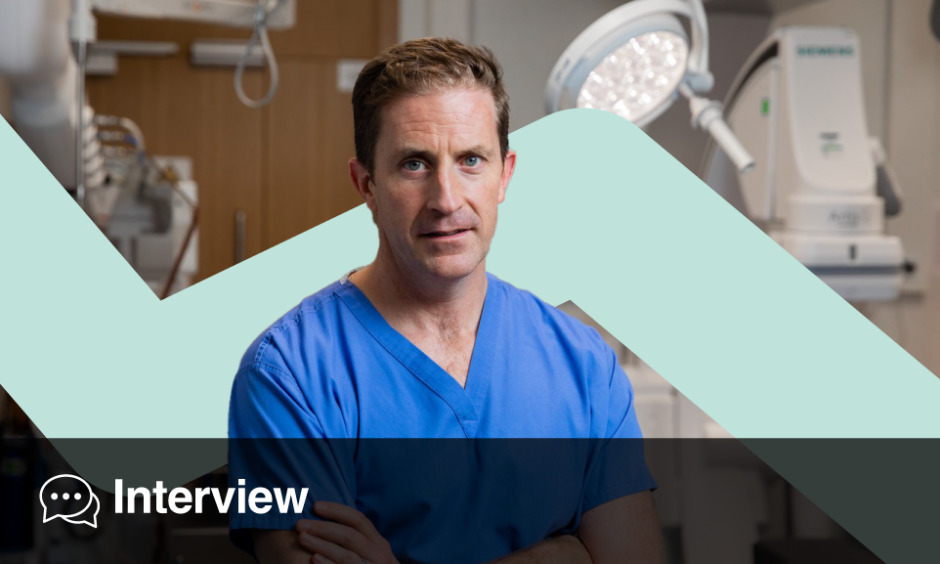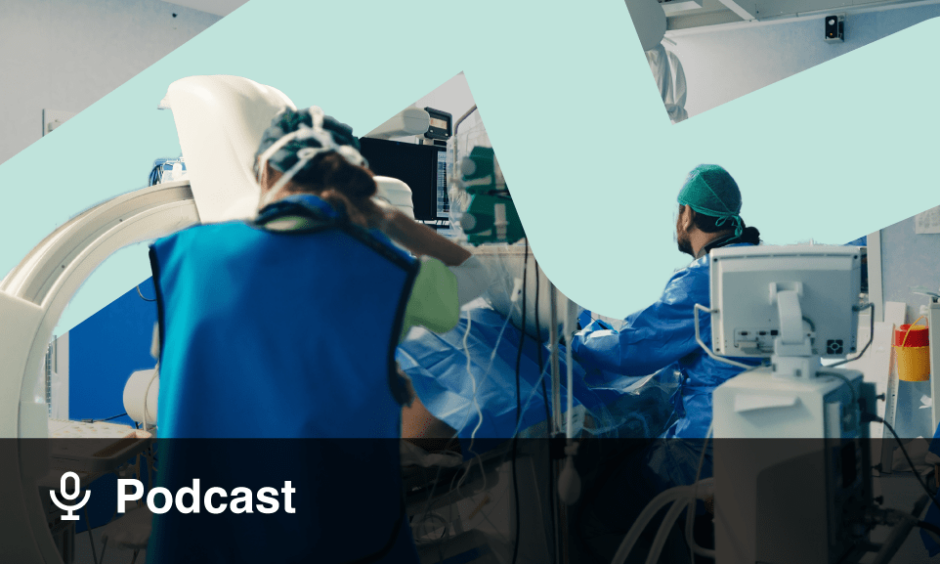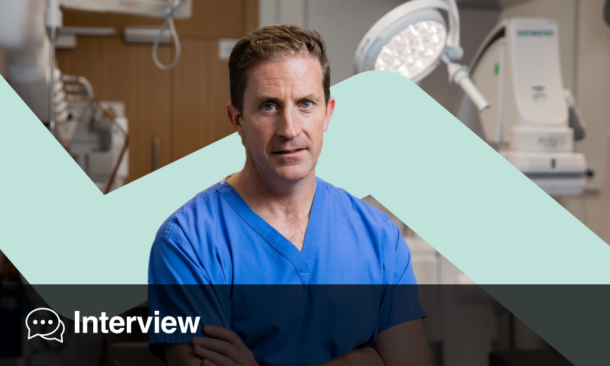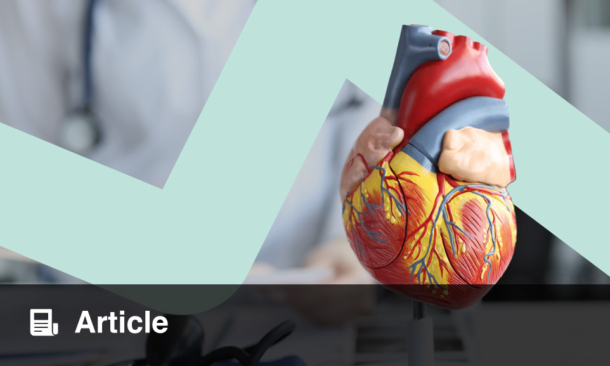Abstract
Cardiovascular implantable electronic device (CIED) infections have become an increasing problem around the world, affecting one in 20 patients within 3 years of device implementation. Prevention of reinfection following CIED reimplantation is a prominent challenge. One of the most difficult aspects of managing CIED infections is the complexities of their diagnosis: with the complexities of many infections, timely and correct diagnosis becomes complicated, frequently causing delays in commencing proper therapy, and worsening disease severity. As patients receiving CIED therapy are now older, and possess significant comorbidities, they are at a higher risk of infection. The American Heart Association (AHA) has issued a statement to educate clinicians about CIED infections, and the required care for those with suspected or diagnosed infections. To prevent an infection from spreading, it is important to isolate the causative pathogen and perform testing for susceptibility, which is required for crucial choices, including routes and duration of antimicrobial therapy. This review aims to serve as a valuable resource for healthcare professionals, by synthesising current knowledge and best practices; and providing insights into preventive measures, diagnostic challenges, therapeutic strategies, and evidence-based approaches to diagnose and improve the management of CIED infections in an ageing and medically complex patient population.
Key Points
1. With the growing challenges that arise among CIED recipients, especially within the ageing and medically complex patient population, understanding the reinfections that occur in at least one in 20 patients has become pivotal.
2. This review aims to serve as a valuable resource for healthcare professionals, by synthesising current knowledge and best practices, and providing insights into preventive measures, diagnostic challenges, therapeutic strategies, and evidence-based approaches to diagnose and improve the management of cardiovascular implantable electronic device (CIED) infections.
3. Reimplantation after more than 72 hours may increase the chance of reinfection, underscoring the significance of prompt action. The issues that must be addressed to manage CIED reinfections include reimplantation timing, patient comorbidities, and the interaction of systemic and surgical factors. To ensure effective management, continuous efforts must be made to improve infection prevention and treatment procedures.
INTRODUCTION
Cardiovascular implantable electronic devices (CIED) are a group of high-end medical hardware, used to monitor and regulate the activity of the heart. These include pacemakers, implantable cardiac defibrillators, and cardiac resynchronised therapy devices.1 These devices are placed into the patient’s body, usually in the chest region, and are connected to the heart via tiny cables called leads. Myriads of heart conditions with deranged electrical impulse activity are treated with placement of CIEDs.2 CIEDs are used for heart failure, bradycardia, and tachyarrhythmias, such as ventricular tachycardia and ventricular fibrillation, as a choice of management. To examine the need for devices, a thorough examination by cardiologists and electrophysiologists is necessary, together with information about the patient’s overall health.3
The use of CIEDs has proven to be beneficial, and increase patient longevity.4 There are a number of potential threats with CIEDs, some of which may require removal of the device, and reimplantation. This is considered in case of power unit failure, or device life that has reached its end, device malfunction, and infection at the site of implantation.5 Implantation site infection has significant mortality rates.6 CIED infections can occur by two major mechanisms, the most frequent one involving contamination of the pulse generators or leads during implantation or manipulation. The second mechanism is a direct bloodstream infection, and can also be a direct lead seeding.7,8
Approximately one in 20 patients develops an infection within 3 years of implantation of CIED. In such cases, the CIED and all of its components should be removed due to post-device primary infection, and reimplantation of the device should be performed, following guidelines by the American Heart Association (AHA), European Heart Rhythm Association (EHRA), and European Society of Cardiology (ESC).9 Although many studies have examined the rate of infection after implantation of CIEDs, the study of reinfection rates after CIED reimplantation post-device primary infection remains unclear. This is the driving force and the objective of this narrative review.10
METHODOLOGY
This review aimed to investigate reinfection rates following CIED reimplantation post-primary device infection. To achieve this, a thorough literature search was conducted from the specified databases, including PubMed, Scopus, Google Scholar, Cochrane Library, Medline, and Embase, using a combination of medical subject headings and keywords such as “CIED”, “post-device reinfection”, and “reimplantation”. All articles chosen as references were published between 2017–2023, and addressed reinfection rates and related factors. This methodological approach ensured a thorough examination of the current literature on CIED reimplantation-associated reinfection rates, facilitating a comprehensive understanding of this critical aspect of cardiac device management.
BACKGROUND
CIEDs represent cardiac rhythm management tools aimed at enhancing patient quality of life, and increasing patient survival. These devices come in three major categories: pacemakers, implantable cardioverter defibrillators, and cardiac resynchronisation therapy (CRT) devices (CRT pacers or CRT defibrillators).3 The incidence of CIED infections ranges from 0.5–2.2%, and this variation is influenced by a variety of factors, including patient demographics, device type, time since implantation, sex, chronic corticosteroid usage, presence of chronic obstructive pulmonary disease, diabetes, heart failure, and malignancy.11
In one of the largest contemporary prospective cohort studies, it was discovered that patients who had a reimplanted device faced a 1.8% risk of repeat reinfection.12 In February 2018, out of the 280 studies screened, the incidence rate of CIED reinfection was determined to be 0.45% per year. Furthermore, the studies indicated that delaying the time to reimplantation was associated with an increased likelihood of reinfection.13
EPIDEMIOLOGY
In the USA, more than half a million different subtypes of CIEDs are inserted each year, with more than 4 million inserted between 1993–2008. For the first implantation, risk of infection ranges from 0.5–1.0%. For device removal, reimplantation, or upgrade, risk ranges from 1–5%. Early infections typically result from the implantation procedure itself, whereas late infections typically happen in patients who are already ill, or as a result of a process that eventually crosses a threshold of clinical significance. Infective endocarditis occurs as a result of procedures affecting the cardiac blood vessels, generator pocket, or cardiac tissues. The timing of CIED infection appears to be bimodal in distribution.14-16
The most frequently reported aetiology of CIED infection is coagulase-negative staphylococcus (range: 40–70%), followed by Staphylococcus aureus (range: 9–30%), and Gram-negative bacilli (range: 11–20%). The incident rate of reinfection following initial management of CIED infection is not insignificant. Findings from a systematic review and meta-analysis suggest that time to reimplantation affects rates of reinfection, when device reimplantation occurs at ≤72 hours, compared with >72 hours.14,15,17
PATHOGENESIS
Pathogenesis of repeated infection post-reimplantation involves a complex interplay between the device, microbe, and host. Various risk factors related to the patient, device, and microbial virulence factors influence CIED infection development. Biofilm formation is a critical virulence factor that hinders the immune response, limits antibiotic effectiveness, and renders bacteria less susceptible to treatment.18,19
There are two basic mechanisms of infection development: bacterial contamination during implantation, and hematogenous seeding from a distant infection source.18,19 Bacterial contamination can occur during surgery, or perioperatively, either from handling the device, or through airborne exposure in the operating theatre. Hematogenous seeding is less common, and involves pathogens travelling through the bloodstream to the device.18,19
Infections often begin with contamination during implantation, emphasising the importance of surgical site prophylaxis. However, hematogenous seeding can also lead to device infections, with S. aureus posing the highest risk in this scenario. While there is a conceptual separation between local device pocket infection, and infection involving leads and bacteremia, it can be challenging to distinguish between the two in practice. Bacteria can migrate from the generator pocket along leads, reaching intracardiac structures.18,19
The MEDIC study, involving 434 patients with CIED infections at institutions in the USA, Spain, and Germany, from 2009–2012, aimed to assess the risk of repeat infections after CIED reimplantation, and evaluate reimplantation strategies. Participants underwent various tests upon admission. Device removal was attempted in most cases, and the timing varied. Bacteriology analysis and antibiotic therapy followed. Within 6 months, only four out of 11 patients who relapsed had initial device removal and reimplantation, resulting in a low repeat infection rate (1.8%). Patients who did not have device removal had worse outcomes, with higher mortality, repeat infections, and chronic antibiotic use. Those with device removal had better outcomes, with a high proportion remaining infection-free.10 Limitations included the short follow-up period, potential missed infections after the study, and no differentiation between relapse and reinfection. There was also a referral bias, as all institutions were tertiary referral centres.20
Microbial virulence factors, which contribute to the formation of CIED infections, pose a significant challenge for the management of CIED infections, due to the ability of staphylococci to adhere to devices; formation of biofilms that are antibiotic-resistant; and the presence of small-colony variants with reduced susceptibility to antibiotics, and increased pathogenic traits. The ability of staphylococci to form a multilayered biofilm becomes a major limitation, as it traps bacteria, making them dormant and less susceptible to antibiotics. This microbial persistence leads to high relapse rates, and increased mortality if the infected device is not removed. Additionally, the difficulty in isolating and culturing pathogens embedded in biofilms poses challenges for accurate diagnosis and treatment.18,19
DIAGNOSIS
It is important to perform a diagnostic workup for suspected CIED infection. During reoperation, a complete blood count, erythrocyte sedimentation rate, and levels of C-reactive protein and procalcitonin must be obtained. Two sets of blood samples should be obtained before antibiotic therapy. The routine blood samples are sent for culture, for recovery of both aerobic and anaerobic bacteria. For culture-negative CIED infections, especially in the case of central venous catheters and immunocompromised hosts, special fungal mycobacterial blood cultures can help isolate the causative pathogen. Device infection can occur from generator contamination or leads during the CIED system implantation/replacement. This depends on the causative organism type, and the onset timing of bacteremia from the date of implantation of the device.20
Patients with CIED infection have the four following scenarios: pocket erythema, swelling, discomfort, drainage, erosion, and local pain, which are the most common signs; fever and no local changes at the generator pocket site; bacteremia and no local changes at the generator pocket site; and lead thrombus or vegetation on echocardiography.20
Diagnosis is typically confirmed using an echocardiogram, which shows lead vegetations. Transoesophageal echocardiogram has a better sensitivity compared to transthoracic echocardiogram in detecting CIED infections. Serial echocardiograms can be warranted, as some lead masses are asymptomatic, and up to 13% of patients have this. In these cases, the masses usually represent fibrin sheath, and do not increase the risk of infection.21
MICROBIOLOGIC DIAGNOSIS
Coagulase-negative staphylococci and S. aureus are the major pathogens in 60–80% of reported CIED infections, followed by Gram-negative bacilli, fungi, polymicrobial and other gram-positive coccus infections, and culture-negative cases. All patients with suspected CIED infection should gain a thorough physical examination and laboratory evaluation.21 The new 2019 International CIED Infection Criteria created by the EHRA show erythema, pocket swelling, warmth, pain, purulent discharge/sinus formation or pocket deformation, threatened adherence and erosion, or exposed generator or proximal leads, as diagnostics of definite CIED infection. Intracardiac echocardiography is used for vegetation detection, and PET and CT scans can show abnormal activity inside the pocket, or along the leads, which suggests presence of CIED infection. Lead or pocket culture may be sufficient for microbiological minor criteria.22
MANAGEMENT
Device reimplantation at a remote anatomic site will increase the risk for operative mortality, or recurrent infection. Initial antibiotic therapy is required, for instance consisting of ampicillin plus gentamicin.23
In case of high probability of CIED infection, it is important to carry out blood counts, blood cultures, and a transoesophageal echocardiogram. Simultaneously, a pacemaker dependency assessment is required. If confirmed, temporary pacing can be performed, and this can be followed by complete hardware removal and culture of pocket tissue and material.24
Additionally, enterococci can be resistant to the killing effects of cell wall active agents (penicillin, ampicillin, and vancomycin), and are impermeable to aminoglycosides. The combination of the two agents, a cell wall-active agent with a synergistically active aminoglycoside, is required to cure many invasive infections, such as body substance isolation, and infective endocarditis. Combination of ampicillin and gentamicin is normally the preferred choice. However, there have been more combinations tested, such as ampicillin and ceftriaxone, which are useful, and saturate low-molecular-weight penicillin-binding proteins. This combination is found to be less nephrotoxic, so it is useful for aged patients. It can also be useful for Enterococcus faecalis infective endocarditis.25
For successful treatment of definite CIED infection, complete removal is required. Antibiotic therapy can increase 30-day mortality several times. To treat isolated pocket infection, antibiotics are given for 14 days for bacteremia prior to new implantation. However, in the case of endocarditis, this requires 4–6 weeks of antibiotics.26 The antibiotic of choice is vancomycin in the case of anti-staphylococcal resistance and oxacillin resistance. Alternatives can be nafcillin and cefazolin, found in oxacillin-susceptible staphylococcal strains.27
DISCUSSION
A number of multivariate studies and meta-analyses have been conducted on reinfection rates following CIED reimplantation. A study conducted by Chew et al.13 showed that, following the first treatment for CIED infection, the combined reinfection rate was approximately 0.5% per person per year. The significant heterogeneity seen within the pooled examination recommends the nearness of a few factors that can influence the rate of reinfection. Components may incorporate the nearness of bacteremia, reaction to treatment, or persistent components, such as the nearness of immunosuppression.28
Since the risk of infection was examined based on the time of reimplantation, a time of >72 hours was associated with a fourfold higher incidence, compared with reimplantation at ≤72 hours. Using a cut-off time of 1 week, no difference in reinfection rate was observed between the time required for device reimplantation. The greater frequency of comorbid diseases in the respective research populations, or the high percentage of systemic infections necessitating additional time to cleanse the bloodstream of bacteremia, may be the cause of the higher reinfection rate correlated with a time to reimplantation >72 hours. The proportions of reported endocarditis, lead vegetations, or bacteremia, compared with localised pocket infection, were significant factors that the authors were unable to account for at the meta-regression level.28
The MEDIC study prospectively enrolled subjects at multiple institutions in the USA and abroad with CIED infections. Boyle et al.10 stated that the timing of device reimplantation did not appear to alter reinfection rates, despite the considerable variation in medical practice that was discovered by this investigation. The authors hypothesised that a variety of other risk variables may play a larger influence on assessing infection relapse rates than decisions regarding the time of reimplantation, with the constraint of a relatively small sample size and restricted follow-up.10
In a multivariate study of left ventricular assist devices (LVAD), Narui et al.29 showed age as a predictor of repeat infection, where younger age was a significant predictor of recurrent infection. The mechanism is not immediately evident, and has not been documented before. The fact that younger patients were more likely to have an implantable cardiac defibrillator may be a confusing factor. Despite not being a statistically significant predictor of repeat infection, this component did have a tendency in that direction. Another aspect revealed by this study indicated that CIED reimplantation on the same side as the initial site, particularly beyond a 3-month post-extraction period, was identified as an independent predictor for recurring infections. Individuals undergoing a second CIED implantation on the original side exhibited an increased likelihood of infection during the follow-up period. The majority of these reimplantations occurred more than 3 months after the extraction procedure, and a minority involved pocket infections as the recurrent issue. This highlights a significant risk associated with reimplantation on the same side, even with a substantial time gap after CIED removal.29
In a study by Riaz et al.,30 individuals with CIED infections were examined while using an LVAD. Three of the patients only had pocket infections, and the other three developed CIED endocarditis after contracting an LVAD infection. Although the three patients with CIED endocarditis continued to take long-term suppressive antibiotics, five out of six patients were still alive after a median follow-up of 15 months. The LVAD driveline provides a channel from the exterior environment to the inside area, which is probably why these patients appear to have a bad prognosis. In one prospective research study, the median period from LVAD implantation to infection was 68 days, and the percentage of LVAD infection was 22%. Therefore, LVAD provides both source and reservoir of infection, and CIED removal does not fully address either of these factors.30
A study by Yu et al.31 showed that there are still worries about an elevated probability of recurrent infection in patients who have already had a device infection, despite the existence of evidence-based support for the effectiveness of using resterilised CIEDs.
In this study, the authors examined the incidence of infection relapse in patients who had previously had CIED infections, debrided their devices, and then had a new or resterilised CIED implanted. The authors discovered that there was not a significant difference in the rate of spreading infection with either device, and that either new or resterilised CIEDs had low relapse rates. This study is the first that the authors are aware of that specifically addresses the use of resterilised CIEDs in patients who have a history of device infection. Additionally, the authors used a subpectoral muscular implantation method that puts the device deep within the ipsilateral pectoral muscle.31
PREVENTION
Contamination during implantation, frequently from the patient’s skin flora or airborne particles in the operating theatre, is the primary source of CIED infections. This contamination causes an internal infection, which spreads along the device’s leads, and may result in bloodstream infections that could eventually advance to systemic infection, and endocarditis.32
PRE-PROCEDURAL ACTIONS
Site Preparations
According to the Centers for Disease Control and Prevention (CDC), a surgical site infection in a clean incision typically occurs at a rate of ≤1%.33 Surgery site preparation must be given top priority if this objective is to be reached. This involves using antiseptic cleaning techniques involving chlorhexidine and alcohol, choosing electronic hair trimming over shaving, and making sure to wear the proper gowns and masks.34 To reduce the chance of infection, the timing and prescription for a given device should be carefully considered. Instead of ignoring an elevated risk for a disease that could have been prevented, delaying implantation, and allowing time for preventive measures, is preferable.35
Medications and Comorbidities
The treatment of concomitant disorders can help lower the risk of device-related infection problems because a significant percentage of patients getting CIEDs are older, and have a heavy comorbidity burden.
The rate of infection is not related just to diseases, but also to the drugs taken by the patient, especially corticosteroids and antithrombotic medications, which may increase the risk of infection.35
Prophylactic Antibiotics
According to systematic reviews and meta-analyses, prophylactic intravenous antibiotic therapy, such as intravenous cefazolin use before surgery, is the gold standard of care for preventing CIED infection, and reduces the relative risk of device-related infections by 70%.36
During the entire period that the incision is open and susceptible to bacterial contamination, optimal prophylaxis ensures that adequate concentrations of a suitable antibiotic are available in the blood, tissue, and wound. The antimicrobial agent should be effective against micro-organisms that are expected to be present during surgery. The patient’s normal bacterial flora, and the hospital’s microbiological ecology, should be least negatively impacted by the choice and timing of antibiotic prophylaxis.29
Intraoperative Procedures
As preventive measures, factors such as a proper ventilation system, air quality improvement, limited number of people, and temperature management during the operation, should all be taken into account. Furthermore, glove changing before dealing with the generator, and when handling the patient, may lower the risk of infection.36
Haematoma Prevention
Proper surgical procedures should be used to prevent haemorrhages. Avoiding pocket haemostasis should obtain special attention, especially in individuals who have a higher risk of bleeding,37 which could be ensured by using electrocautery pressure dressings, and preventing heparin-containing products.
Local Intraoperative Antibiotics
Other than the administration of preoperative antibiotics, clinicians should consider using a mesh envelope impregnated with minocycline and rifampin in high-risk patients, as major CIED infections were shown to be 40% less common when an antibacterial envelope was used in addition to standard of care infection-prevention methods. Patients who received the envelope did not experience any more system- or procedure-related problems than patients who did not.38
Postoperative Procedures
The use of prophylactic antibiotics prior to surgery has been advised by the AHA and Heart Rhythm Society (HRS) because it has been linked to a decreased incidence of CIED infections.19,39 The PADIT trial, which investigated the clinical efficacy of using additional antibiotics to lower device infection rates, found that there was no benefit to incremental postoperative antibiotic use.40 Operating rooms and electrophysiology/catheterisation laboratories must adhere to sterile procedural standards, as for other surgeries associated with implants.41
CONCLUSION
This comprehensive review has clarified the critical concern surrounding reinfection rates after the reimplantation of CIEDs following primary device infections. The information presented here highlights the difficulty in treating CIED infections, which present a significant challenge to modern healthcare.
The likelihood of reinfection is significantly influenced by the date of device reimplantation, and several risk factors, including patient comorbidities. Reimplantation after >72 hours may increase the chance of reinfection, according to studies, underscoring the significance of prompt action. Reimplantation timing, patient comorbidities, and the interaction of systemic and surgical factors are only a few of the complicated issues that must be addressed to manage infections from CIEDs. In order to manage CIEDs effectively, continuous efforts must be made to improve infection prevention and treatment procedures, informed by ongoing research, while taking into account the practical challenges that come with their implementation.
This review further highlights the complex nature of CIED infections, where systemic and surgical variables both affect the total risk. In order to reduce the likelihood of CIED infections, prevention techniques such as suitable site preparation, prophylactic antibiotics, and local intraoperative antibiotics have been proposed. Nevertheless, obstacles including patient variability, resistance to antibiotics, and sensitivities in the surgical setting make it difficult to effectively apply preventive measures. Given the inherent constraints, a nuanced strategy is necessary.
To stop the spread of CIED infections, the causal pathogen must be isolated, and extensive susceptibility testing must be performed. This crucial phase is essential for making educated judgments about the type, route, and duration of antimicrobial therapy. The importance of evidence-based approaches cannot be overstated in helping doctors through the complexities of CIED infections, and ensuring optimal patient outcomes.
This review offers helpful insights for clinicians, researchers, and policymakers working to improve patient outcomes and lessen the burden of CIED-related complications in cardiovascular medicine, by thoroughly analysing the existing research, and investigating various aspects of CIED infections. In order to address this ongoing issue in cardiac care, more study and ongoing efforts in infection prevention and treatment are required.







